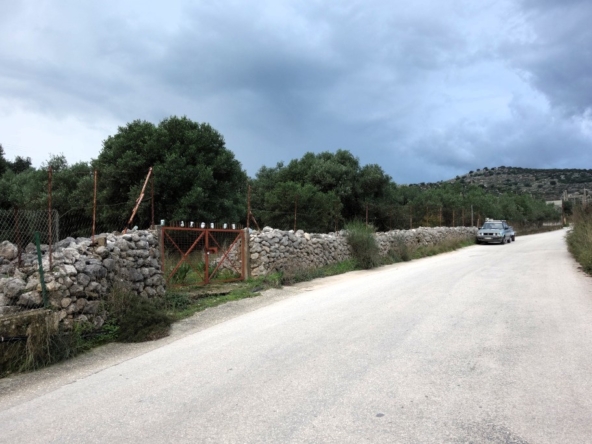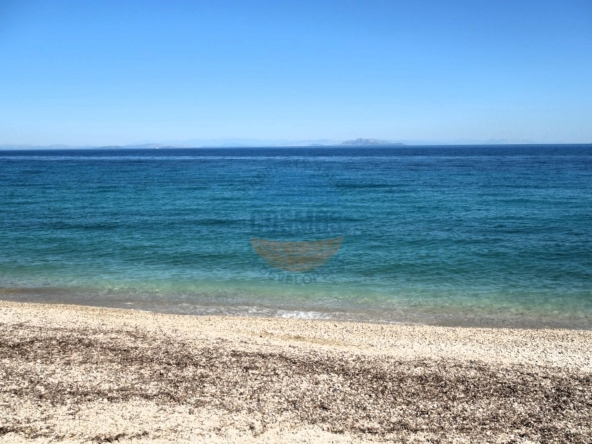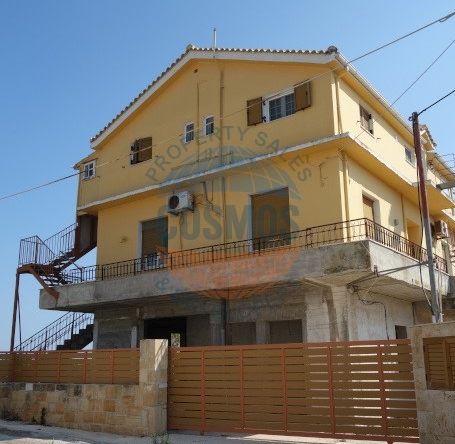Argostoli Area
The Municipal District of Argostoli is the island’s largest and seat of the Municipality of Kefallonia. According to the 2001 census it had 12,722 inhabitants while its area is 155,000 stremmata (38,300 acres). The early development of Argostoli was rapid. It was the second city in Greece to acquire electricity. The town had, from the early stages, museums, tree planted streets, squares, elegant mansions, philharmonic institutions, theatres, small factories and sporting life, making Argostoli the professional and cultural centre of the island.
The earthquake of August 1953 nearly leveled the entire island of Kefallonia with the exception of the northern part. The capital Argostoli was completely destroyed. Shortly after followed the haphazard re-building of the capital unfortunately without a trace of its former dominant and aesthetic feeling. Once reconstructed, the Argostoliotes began to seek the elegance that had marked all aspects of their culture and hence forth, over a period of almost thirty years, evolved the basis of the Argostoli you see today.
In Argostoli you can visit the Archaelogical Museum, the Korgialenio Library, the Philharmonic Hall and the Kefalos Theatre. If you are interested in shopping, buying in Argostoli will satisfy the most demanding consumer.
Located near Argostoli is the Castle of St. George, the island’s capital until 1757, the Katavothres (a unique geological phenomenon) and the Koutavos Lagoon.
Elios Pronnoi Area
The Municipal District of Elios-Pronnoi occupies an area of approximately 111,000 stremmata (27,428 acres) in the south-eastern part of Kefallonia and its population according to the 2001census amounted to 3,788 inhabitants, mainly engaged in tourism, in addition to trade, manufacturing and livestock.
There are two distinct regions in this district, whose names come from ancient times: Elios the Southwest region which is predominantly lowland and Pronnoi the Southeastern region which stretches from the edge of the Ainos National Park to the sea and is mostly mountainous.
Elios-Pronnoi Area is characterised by its rich natural beauty of its scenery. The National Park of Ainos, the plains of Eleios and Tzannata, the beautiful beaches in Katelios, Kaminia, Mounda, Skala and Poros all of which have been honored for their beauty and crystal clear waters (“Blue Flags of Europe”), the canyons, the number of archaeological sites, monasteries, the legends and traditions of the place coupled with the high quality tourist facilities and hospitality of the residents create conditions for a comfortable, varied and interesting stay for every visitor.
Erissos Area
The Municipal District of Erissos (78,114 stremmata or 19,302 acres) covering the northern part of the island is known for its unique beauty. According to the census of 2001 it had 1,991 inhabitants and includes villages such as Assos, Fiskardo amongst many others. The road network connecting all the villages passes through an array of idyllic spots and all connect up to the main roads of the island. Passing through steep streets you can enjoy the dreamy views of the small bays below at a depth of several meters. On this trip you have the opportunity to visit the famous village of Assos (the capital of the island in 1593) with the famous Venetian fortress of the 16th century and the old rural prisons that operated until 1953.
Fiskardo, an old fishing village whose houses remained untouched by the earthquake of 53, is today one of the most famous tourist resorts in Greece. Here is the house of the poet of the sea Nikos Kavadias. Fiskardo takes it’s mane from the Crusader Robert Guiscard.
Fiskardo is surrounded by villages which result in glittering beaches.
Livathos Area
The Municipal District of Livathos is located in the southwestern part of the island and it is perhaps the richest and most rapidly growing region on the island.
According to the 2001 census it had 4,763 inhabitants and an area of 65,271 stremmata (16,128 acres).
In Livathos there are many famous villages. Kourkoumelata, re-built after the 1953 earthquake by the Vergotis family, in this region the poet Lord Byron resided for a short time whilst other poignant villages of the district include Keramies, Karavados etc – each with their own claim on the history and culture that is Kefallonia.
There are numerous and unparalleled beaches in this area.
The area of Livathos hosts the International Airport of Kefallonia.
Omala Area
The Municipal District of Omala is the only community in the Prefecture of Kefallonia and extends throughout a plateau region of the same name. It is famous as the region which produces the award winning Robola wine, but it is also the place of pilgrimage of Saint Gerasimos, the patron saint of Kefallonia. According to the census of 2001 it had 1,071 inhabitants and an area of 46,699 stremmata (11,539 acres).
Palliki Area
The Municipal District of Palliki occupies the western peninsula of Kefalonia. According to the census of 2001 it had 7,677 inhabitants and is the second most populous district of Kephallonia. Its area covers some 119,341 stremmata (29,489 acres).
Palliki is famous for the exceptional quality of its agricultural products, for the hospitable character of its inhabitants and the specificity of the natural landscape. The territory is characterised by a flat to hilly terrain. The southern part is covered by valley floors that are the most fertile part of Kefallonia. The northern part is mountainous interspersed with valleys.
Lixouri is the capital of Palliki, a modern town with a harbour, spacious tree-lined streets, and beautifully flowered squares. A stream divides the town however both parts are connected by small bridges.
The area has fantastic beaches from which to enjoy the crystal clear waters.
In Lixouri you can visit the Iakovatios Library, the Philharmonic Academy and the Monastery of Agia Paraskevi in Lepeda.
Pilaros Area
The Pilaros Municipal District occupies an area of 81,112 stremmata (20,043 acres) in the northern part of Kefallonia and the population, according to the 2001 census, numbered some 1,565 inhabitants, who are mainly engaged in tourism activities as well as trade, farming and the beekeeping.
The name Pilaros means two gates. Twelve of the villages are built on the slopes of Mt. Agia Dinati and twelve on the slopes of Mt. Kalonoros. The villagers of this district uphold their local traditions and housewives here roast meat in an unusual cooking utensil, the tsepera, which is made of clay and goat hair.
Sami Area
The Municipal District of Sami on the east coast of Kefallonia, numbers about 2,297 residents (2001 census) and covers an area of 129,326 stremmata (31,956 acres). Sami hosts the principal port of Kefallonia and is an area that combines an extended coastline with an interesting inland.
The beach Antisamos, the Paliouras and the Karavomylos small lake, where part of the subterranean waters of Katavothres (located near Argostoli) end, are all natural monuments you can visit.
The area is full of interesting geological phenomena. They have recorded 17 caves, which contribute to the great interest there is in the prehistory of the region. Today two caves are accessible to the public: the underground Lake Melissani in Karavomylos and Drogarati cave on the way to the village Haliotata.







